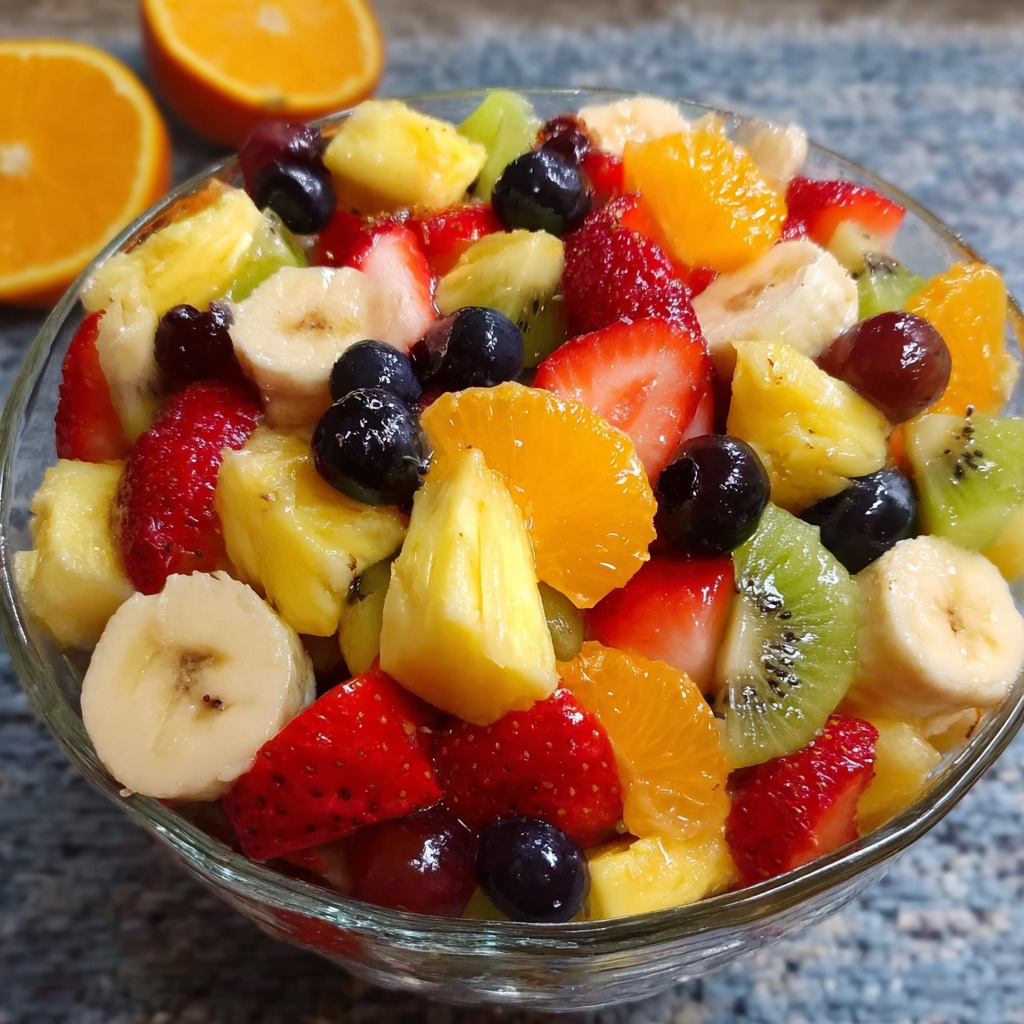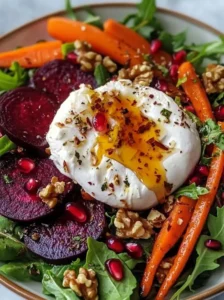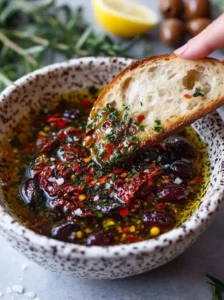Beat the Heat with this Perfect Summer Fruit Salad: Refreshing and Nutritious Delight
As summer temperatures rise, there’s no better way to cool down and refresh your palate than with a Perfect Summer Fruit Salad. This delightful recipe combines the juiciness of seasonal fruits with a light citrus dressing, creating a vibrant burst of colors and flavors on your plate. Whether you’re hosting a backyard barbecue or enjoying a quiet day by the pool, this fruit salad is the ultimate summer treat that will help you beat the heat.
One of the great things about this Perfect Summer Fruit Salad is its versatility. You can customize it with your favorite fruits or whatever is in season, ensuring a fresh and delicious experience every time. The natural sweetness of the fruits is enhanced by a zesty lime dressing, making each bite an explosion of taste that excites the senses. This recipe is not only a feast for the taste buds but also a visual delight, with a medley of vibrant colors that capture the essence of summer.
Quick Recipe Highlights
Recipe Overview
Why You’ll Love This Recipe
Taste wise, this Perfect Summer Fruit Salad strikes a harmonious balance between the sweetness of ripe fruits and the tangy zing of the lime dressing, ensuring a refreshing bite every time. The textural variety, from crunchy apples to succulent berries, creates a satisfying mouthfeel that complements the flavor symphony.
Convenience is another reason to love this recipe. With a prep time of just 15 minutes and no cooking required, it’s an ideal choice for spontaneous picnics or unexpected gatherings. Plus, it can be prepared ahead of time and refrigerated, enhancing its flavors without any rush.
Nutritionally, this fruit salad is a powerhouse packed with vitamins, antioxidants, and dietary fiber, contributing to overall well-being while helping you stay hydrated and energized throughout the day.
On the social front, serving this visually stunning and healthful dish can elevate any gathering, fostering conversation and delighting guests with its vibrant colors and refreshing flavors.
Cost-effectiveness is marked out by the use of seasonal fruits, which are generally more affordable and flavorful, yielding a plentiful and delicious salad without breaking the bank.
Historical Background and Cultural Significance
The concept of fresh fruit salads dates back to ancient times when people began cultivating fruit for consumption. Traditionally, fruit salads have been celebrated across different cultures as a means to enjoy the bounty of nature in its simplest form.
Culturally, fruit salads are often regarded as a symbol of health and vitality. They are featured prominently in various festivals and gatherings, symbolizing abundance and community spirit. In many cultures, fruit salads are used to showcase regional specialties and seasonal picks.
The recipe for fruit salads has evolved significantly, reflecting the globalization of available fruits and creative liberties in dressing options. Today, these salads are tailored to personal tastes and dietary needs, embracing a diverse array of fruits from around the world.
Regional variations abound, with some regions favoring specific fruits such as mangoes in tropical areas or berries and apples in temperate zones. Each variation adds a local touch to the universal appeal of fruit salads.
Ingredient Deep Dive
Watermelon, often the star ingredient in summer salads, is not just a juicy delight but also provides hydration and is rich with antioxidants like lycopene, which contribute to heart health. When selecting watermelon, opt for a smooth rind without bruises and a symmetrical shape. Once cut, store it in airtight containers in the fridge to maintain freshness. If watermelon isn’t your preference, cantaloupe or honeydew are fantastic substitutes that retain the salad’s sweetness.
Mint leaves add a refreshing note and elevate the aroma of the salad. Historically appreciated for their medicinal properties, mint leaves aid digestion and provide a cooling sensation. When choosing mint, look for vibrant, unblemished leaves. Fresh mint can be stored upright in water, like flowers, or wrapped in a damp paper towel in the fridge. Basil or lemon verbena can serve as alternatives if mint isn’t available.
Common Mistakes to Avoid
Failing to use ripe enough fruit can lead to a lackluster flavor profile. Ensure fruits are at their peak ripeness for the best taste.
Overmixing the salad could cause the tender fruits to lose their texture and become mushy, so mix gently.
Not balancing the citrus dressing can overwhelm the fruits. Taste and adjust to ensure a harmonious blend of sweet and tangy.
Adding dressing too early can result in soggy fruits. Dress just before serving to maintain crispness.
Neglecting to chill the salad can compromise its refreshing nature. Chill it in the fridge for at least 1 hour before serving for optimal enjoyment.
Ignoring presentation can detract from the visual appeal. Take time to layer fruits attractively.
Using a dull knife can crush and bruise fruits, so ensure your knife is sharp for clean cuts.
Essential Techniques
Cutting techniques are pivotal in ensuring uniformity and visual appeal in your fruit salad. Mastering precise cuts not only improves aesthetics but also ensures even distribution of flavors. Avoid common pitfalls like uneven pieces by using a cutting board with clear measurements and a well-maintained, sharp knife.
Balancing acidity in the dressing is crucial for bringing out the sweetness of the fruits. Citrus balances the flavors, enhancing each fruit’s natural taste without overshadowing it. The key is to start with minimal amounts of lime juice, tasting as you go, so as not to overpower the fruits with acidity.
Chilling the salad is necessary for the absorption of the dressing and maintaining the fresh crunch of the fruits. Be sure to cover the bowl with plastic wrap or a lid to avoid absorbing odors from the fridge.
Pro Tips for Perfect Summer Fruit Salad
Choose a variety of colors and textures for both visual and textural interest, making each bite exciting and different.
Use fruits that are in season locally for maximum flavor at a lower cost, and to contribute to sustainable practices.
Keep the cut sizes uniform so that each piece can be scooped easily, and flavors are balanced with every forkful.
Layer fruits with sturdier ones at the bottom to prevent them from getting crushed, maintaining the salad’s integrity.
Add the mint leaves right before serving to preserve their color and aroma, as they can quickly wilt and lose vibrance.
A sprinkle of a pinch of salt can surprisingly elevate the natural sweetness of the fruits, creating more depth in flavor.
Variations and Adaptations
Regional variations can introduce exciting new flavors or accommodate locally available fruits. Swap standard ingredients like bananas for more exotic options such as dragon fruit or guava, depending on what is readily available.
Seasonal adaptations can be made by incorporating autumnal fruits such as pears and pomegranates, adjusting the dressing with warmer spices like cinnamon or nutmeg.
Dietary modifications include serving this salad with a side of whipped coconut cream for a vegan touch, or adding a sprinkle of toasted nuts for added protein.
Experiment with flavor variations by including herbs beyond mint, like fresh cilantro or lemongrass, for an Asian twist.
Texture modifications can be achieved by incorporating crispy elements like granola or seeds, adding an unexpected crunch to the soft fruits.
Presentation alternatives could see the salad being served in carved-out watermelon bowls or mason jars for a festive and portable option.
Serving and Presentation Guide
For the most aesthetically pleasing presentation, use a clear glass bowl to showcase the vivid colors of the fruit salad. Alternatively, a large platter can be used for showcasing layers of fruit within a buffet setting.
Garnishing with a few whole mint leaves or edible flowers enhances visual appeal, adding an elegant touch that can wow guests.
Traditional accompaniments such as yogurt or honey drizzles can be served on the side, allowing each guest to customize their portion.
Modern serving suggestions include individually layered salad glasses for a sophisticated and personal touch, perfect for formal occasions.
Pay attention to temperature considerations by keeping your fruit salad cool, especially during outdoor events, to keep it refreshing.
Portion control tips include using small serving spoons to prevent guests from inadvertently taking overly large servings, ensuring everyone gets a taste.
Wine and Beverage Pairing
Pairing wines with a fruit salad involves choosing those that complement the fresh and tart flavors. A glass of Riesling or Moscato pairs excellently, accentuating the sweetness and refreshing nature of the dish.
Non-alcoholic alternatives might include a chilled glass of lemon-infused sparkling water or a fruity herbal iced tea, both of which quench the thirst while uplifting the palate.
Coffee and tea choices like lightly brewed green tea or a mild chamomile blend pair well, adding a subtle warmth that doesn’t overpower the salad’s flavors.
Always consider serving temperatures, ensuring that beverages are adequately chilled to harmonize with the salad’s refreshing quality.
Beverages can also be served in elegant crystal glassware or jars, reinforcing the laid-back, yet refined vibe of summertime dining.
Storage and Shelf Life
Storing your summer fruit salad properly is key to preserving its freshness. Use airtight containers to prevent the absorption of fridge odors and retain the crispness of the fruit.
Temperature requirements dictate refrigeration, avoiding exposure to warm temperatures which could hasten spoilage.
Choose glass containers for storage to prevent staining and support longer shelf life, ensuring the salad stays fresh for up to 48 hours.
Signs of spoilage include an off-smell, discoloration, or a change in texture, which can indicate fermentation or over-ripeness. In such cases, its best discarded.
If reheating is needed for any additions or toppings, do so separately to avoid affecting the texture of the fruit.
Freezing the salad is not typically recommended as it alters the texture of the fruit, but the recipe can be adapted with specific fruits known to freeze well, like berries.
Make Ahead Strategies
Preparing this recipe ahead of time involves a few steps to maintain its freshness upon serving. Cut and layer the sturdier fruits first, leaving delicate berries for last-minute incorporation to avoid them being crushed.
Storage between steps can be achieved using separate containers, combining just before serving to maintain optimal texture.
Assess the quality impact frequently by tasting small portions to ensure the flavors continue to harmonize and infuse well.
Assembly tips include layering fruits in a specific order to maintain distribution and ease of serving when mixing salads just before eating.
Reheating is unnecessary, but allow time for chilled salad to warm slightly after removing from the fridge, restoring natural fruit flavors.
Fresh element additions such as a zesting of lime and sprinkling of mint are best made just before serving to maintain their crispness and fragrance.
Scaling Instructions
When halving the recipe, ensure citrus and any acidic components are adjusted equally to avoid over-flavoring a smaller batch, considering proportional alterations carefully.
Doubling or tripling the recipe is feasible by ensuring you have adequate serving containers and surface area to work with, preventing overcrowding.
Equipment adjustments may include a larger cutting board or additional serving bowls for larger quantities.
Timing modifications for larger batches include planning extra prep time to accommodate the additional cutting and mixing steps.
Storage considerations heighten with scaling, ensuring plenty of fridge space and airtight container availability for both preparing and storing pre-assembly.
Nutritional Deep Dive
With a macro breakdown emphasizing carbohydrates from the natural sugars in fruits, this salad offers a burst of energy ideal for active days.
Micronutrient analysis reveals high levels of vitamins C and A, along with valuable antioxidants present in fruits like blueberries and strawberries.
Health benefits extend to promoting hydration, supporting digestion and skin health while minimizing caloric intake due to the low-fat content.
Dietary considerations accommodate vegan and gluten-free preferences, ensuring accessibility for various lifestyle choices.
Portion analysis reveals that a serving size offers about 120-150 calories, emphasizing naturally occurring sugars without added sweeteners.
Weight management tips suggest enjoying this salad as a snack or meal component, leveraging its abundance of fiber and nutrients for fuller satisfaction.
Dietary Adaptations
For those following a gluten-free diet, this recipe naturally adheres due to the complete absence of gluten. Cross-contamination should be avoided by using dedicated utensils.
Dairy-free modifications include serving this salad alongside coconut yogurt or dairy-free whipped topping to enhance the creaminess without compromising dietary goals.
Vegan substitutions are unnecessary as the salad inherently contains no animal products; pairing with vegan-friendly accompaniments like nut-based sauces can be explored.
Low-carb and keto adaptations may involve reducing high-sugar fruits, leaning into those that are lower on the glycemic index like berries.
Paleo versions of this salad would remain true to form, given its foundation in whole, natural ingredients without processed add-ons.
Low-FODMAP adherents will delight in easily swapping apple and watermelon for pineapple or cantaloupe, ensuring digestive comfort.
Troubleshooting Guide
For texture issues, rectify soggy outcomes by limiting dressing exposure or repurposing onto drier components, using new fruit if needed.
Flavor balance might require incremental adjustments with lime or additional honey to bring brightness or sweetness back into harmony, tasting progressively.
Temperature problems arise when the salad isn’t served cold enough; reinstate crispness by chilling well in advance.
Equipment challenges such as inadequate cutting tools may be addressed by investing in a quality chef’s knife for seamless fruit preparation.
Ingredient substitutions can misstep when flavors clash; stay within families and profiles for successful swaps, prioritizing compatibility.
Timing concerns alleviate with a thorough plan, measuring preparation durations and ensuring activity is spread efficiently.
Recipe Success Stories
Among the positive feedback from the community are stories of grandparents introducing this vibrant recipe to their grandkids, bridging generations with a shared kitchen activity, celebrating each successful remake.
Variation successes abound, with readers incorporating local specialties like figs and peaches, narrating how personal touch transforms the salad into a unique family tradition every summer.
Adaptation stories emerge from readers mixing in unexpected influences like Mediterranean herbs or Asian spices to create an entirely new taste profile.
Reader suggestions have enhanced the collective creation, from citrus zesting techniques to creative pairings like Thai basil, jazzing up the familiar with new ideas.
Photography tips shared among the community emphasize natural lighting and pastel backgrounds to highlight the salad’s photogenic nature, making presentations as engaging online as on the table.
Frequently Asked Questions
What fruits are best for a summer fruit salad? Stick to seasonal fruits like berries, melons, and stone fruits that are ripe and provide a variety of colors and textures for the best results.
Can I prepare the fruit salad the night before serving? Yes, prepare up to a day in advance, but add dressing and delicate fruits like bananas and berries right before serving to maintain freshness.
How do I store leftover salad? Store leftovers in an airtight container in the fridge. Consume within 1-2 days for optimum freshness and flavor.
Is it possible to freeze the fruit salad? Freezing is not recommended as the texture of fruits changes upon thawing, leading to mushiness and wateriness.
What alternatives work for a lime dressing if I’m out of citrus? Lemon can be a direct substitute, or use a splash of apple cider vinegar for a tart kick with a touch of honey.
Are there common allergens in this recipe? This salad is naturally free from common allergens like nuts, dairy, and gluten, perfect for diverse dietary needs.
Can I add vegetables to this salad? Adding cucumber or bell peppers can work, modifying for a savory twist, ensuring flavors balance with a less sweet dressing.
Is it beneficial to leave the skin on fruits? Skins like apple add fiber and nutrients, but a loss of visual uniformity and slightly varied texture should be expected, depending on the type.
What can replace watermelon if it’s unavailable? Cantaloupe or honeydew provide refreshing flavors and similar moisture elements, closely resembling the watermelon experience.
What dressing variations could I try? Experiment with balsamic, vinaigrette, or honey-lime variations, adjusting zest and juice ratios to suit your taste.
Additional Resources
Reignite your fruit salad creativity by exploring related recipes like the Rosy Berry Ya-Ya or Minted Melon Delight, infusing thematic variety into your meal plans.
Technique guides such as ‘Mastering Knife Skills’ can refine your preparation process, ensuring perfect cuts for an appetizing, well-presented salad.
Deep dive into ingredient information on seasonal fruit selection through guides on sourcing the best produce locally, ensuring a farm-to-table approach to dining.
Equipment recommendations from blenders for perfectly emulsified dressings to ingenious slicing aids can elevate your culinary toolkit and fruit salad experience.
Seasonal variations encourage embracing autumn fruits or winter citrus options, keeping the essence of fresh produce alive through evolving climate Itch swaps as seasons change.
Print
Beat the Heat with this Perfect Summer Fruit Salad
Description
A refreshing and vibrant fruit salad, perfect for those hot summer days.
Ingredients
For the Crust:
- 2 cups watermelon, cubed
- 1 cup strawberries, sliced
- 1 cup blueberries
- 1 cup pineapple, diced
- 1 tablespoon fresh mint, chopped
- Juice of 1 lime
Instructions
1. Prepare the Crust:
- In a large bowl, combine the watermelon, strawberries, blueberries, and pineapple.
- Add the chopped mint and lime juice to the fruit, gently tossing to combine.
- Chill the salad in the refrigerator for at least 15 minutes before serving.
Notes
You can customize the seasonings to taste.





